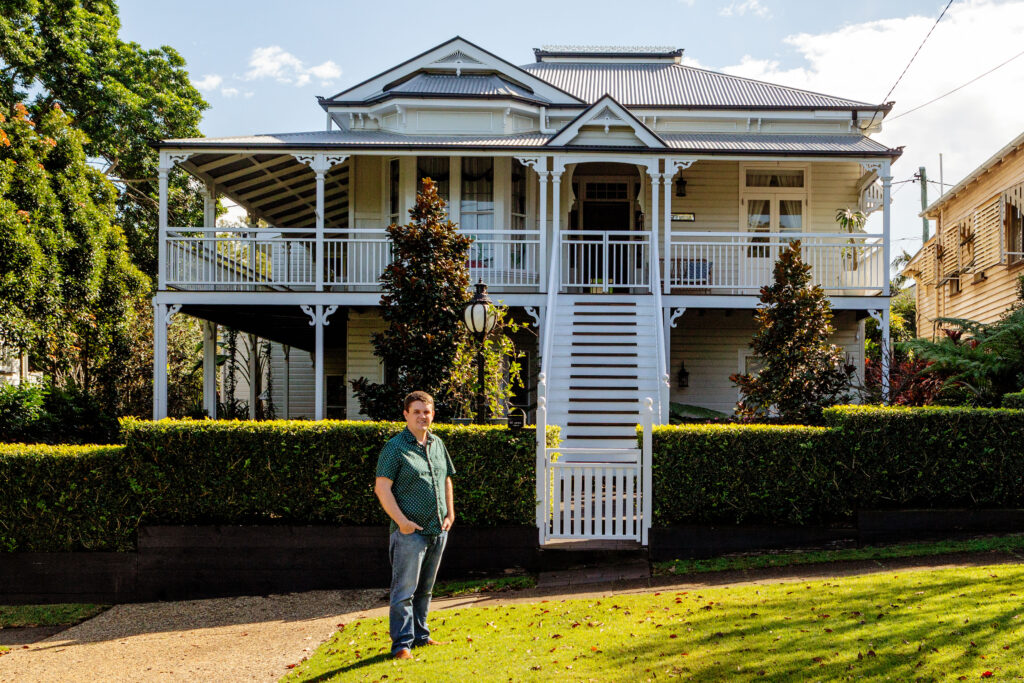How to Minimise Risks When Buying an Investment Property in Greater Brisbane
February 16, 2025 | Investment

nvesting in property can be one of the best ways to build long-term wealth, but it doesn’t come without risks. Whether you’re a seasoned investor or a first-time buyer, understanding how to minimise risks when buying an investment property in Greater Brisbane is crucial to securing a profitable and sustainable portfolio.
With the market constantly evolving, factors like rising interest rates, changing rental demand, and economic conditions can impact your investment. The key to success lies in mitigating risks, selecting the right location, and structuring your investment properly.
Here’s a strategic guide to reducing risk when investing in Brisbane’s property market.
1. Choose the Right Suburb with Growth Potential
One of the biggest mistakes investors make is buying in the wrong location. Not all suburbs experience the same level of growth, and some can stagnate for years.
✅ How to choose a low-risk, high-growth suburb in Brisbane:
✔ Look for historical capital growth trends (suburbs that have consistently appreciated in value).
✔ Check vacancy rates—low vacancy rates indicate strong rental demand.
✔ Research planned infrastructure (new transport links, schools, or commercial developments).
✔ Focus on supply and demand dynamics—avoid areas with an oversupply of apartments.
📌 Top Brisbane suburbs for stable long-term growth:
📍 Cleveland – Strong rental demand, coastal lifestyle.
📍 Chermside – Major shopping hub, excellent transport.
📍 Burpengary – Growing infrastructure, family-friendly.
📍 Springfield – Master-planned community, employment growth.
📍 Everton Park – Gentrifying area with increasing property values.
🔎 Related: Best Suburbs for Property Investment in Brisbane 2025
2. Reduce Financial Risk with Smart Financing Strategies
Many investors make the mistake of overleveraging, which can put them at financial risk if interest rates rise or rental income fluctuates.
✅ Tips for a low-risk finance structure:
✔ Work with an investment-savvy mortgage broker to structure your loan properly.
✔ Keep a financial buffer (3-6 months of expenses) in case of unexpected costs.
✔ Consider a fixed interest rate to protect against rate hikes.
✔ Use an offset account to reduce interest while maintaining liquidity.
💡 Smart financing minimises the risk of cash flow shortfalls and ensures you’re prepared for market fluctuations.
🔎 Related: How an Investment-Savvy Buyer’s Agent Can Help You with Finance
3. Avoid Overpaying – Know the True Market Value
Paying too much for a property is one of the easiest ways to increase your investment risk. An inflated purchase price means lower capital growth potential and longer periods before you see returns.
✅ How to avoid overpaying for an investment property:
✔ Get an independent property valuation before purchasing.
✔ Compare recent sales data in the area to gauge market value.
✔ Hire a buyer’s agent to negotiate the best deal on your behalf.
✔ Avoid getting emotional—invest with logic, not personal preference.
💡 Off-market properties can often be secured at a better price because they don’t involve competitive bidding wars.
🔎 Related: How to Find Off-Market Investment Properties in Brisbane
4. Buy Properties with Strong Rental Demand
A high vacancy rate means struggling to find tenants, which results in lost rental income and higher risk.
✅ How to ensure strong rental demand:
✔ Choose properties near employment hubs, schools, and public transport.
✔ Look for areas with a diverse tenant pool (families, professionals, students).
✔ Consider low-maintenance properties—modern homes and townhouses are often easier to rent out.
✔ Check rental yield trends—aim for a 5-6% gross rental yield for balanced cash flow.
📌 Suburbs with strong rental demand in Brisbane:
📍 Deception Bay – Affordable, coastal suburb with great rental demand.
📍 North Lakes – Family-friendly with shopping and schools.
📍 Ipswich – High-yield investment area with low entry prices.
📍 Redcliffe – Coastal living with high lifestyle appeal.
📍 Loganlea – Affordable area with high rental demand.
🔎 Related: Best Brisbane Suburbs for High Rental Yield in 2025
5. Reduce Risk by Diversifying Your Investment Strategy
Many investors put all their funds into one type of property or a single location, increasing their exposure to risk.
✅ Ways to diversify your property investment portfolio:
✔ Consider a mix of property types (houses, duplexes, Homes with Granny flats or room for one).
✔ Invest in different locations to reduce exposure to local downturns.
✔ Look for different strategies—such as granny flats, renovations, or subdivision.
✔ Spread your risk with long-term rentals in different locations.
💡 Diversification reduces the impact of market fluctuations in any one area.
6. Conduct Thorough Due Diligence Before Buying
Skipping due diligence can lead to unexpected costs, legal issues, and bad investments.
✅ Essential due diligence steps before purchasing:
✔ Get a building and pest inspection to uncover potential issues.
✔ Check for flood zones or environmental risks in the area.
✔ Review zoning regulations—can you add value (granny flat, subdivision)?
✔ Understand the strata or body corporate fees for units and townhouses.
✔ Analyse the rental history and tenant turnover rates in the suburb.
💡 A buyer’s agent handles all due diligence, ensuring you don’t miss any red flags.
🔎 Related: Buyer’s Agents vs. Property Spruikers – Who’s Really on Your Side?
7. Have an Exit Strategy – Plan for the Long Term
Even the best investment plans can change due to market shifts, financial situations, or personal goals. Having an exit strategy reduces risk and protects your capital.
✅ Key exit strategies for property investors:
✔ Sell for capital growth—ensure you have at least a 10-year holding plan.
✔ Refinance and reinvest—use equity from growth properties for further investments.
✔ Switch rental strategies—short-term holiday rentals vs. long-term tenants.
✔ Subdivide or develop—increase property value through renovations or land splits.
💡 A well-planned exit strategy ensures you remain in control of your investment decisions.
Conclusion: Reduce Risk & Invest Smart in Brisbane
Minimising risks when buying an investment property in Greater Brisbane comes down to smart research, strategic financing, and selecting the right locations.
By following these key strategies, you can protect your investment, maximise rental income, and ensure long-term capital growth:
✔ Buy in high-growth suburbs with low vacancy rates.
✔ Avoid overpaying—get independent market data.
✔ Choose properties with strong rental demand.
✔ Diversify your portfolio for reduced risk.
✔ Perform thorough due diligence before purchasing.
✔ Have a long-term exit strategy in place.
📞 Need Expert Help to Reduce Investment Risks?
🏡 We help investors buy smarter, negotiate better deals, and avoid costly mistakes.
💬 Contact IPS Buyer’s Agents today for expert investment guidance!
👉 Book a Free Consultation
📌 Related Articles:
🔎 How Buyer’s Agents Save You Thousands on Investment Properties
Recent Posts
We hope that you have found How to Minimise Risks When Buying an Investment Property in Greater Brisbane helpful.
Click here to contact our expert team of Queensland Buyer's Agents.
Don’t forget to follow our buyer's agents team on Facebook or LinkedIn!
